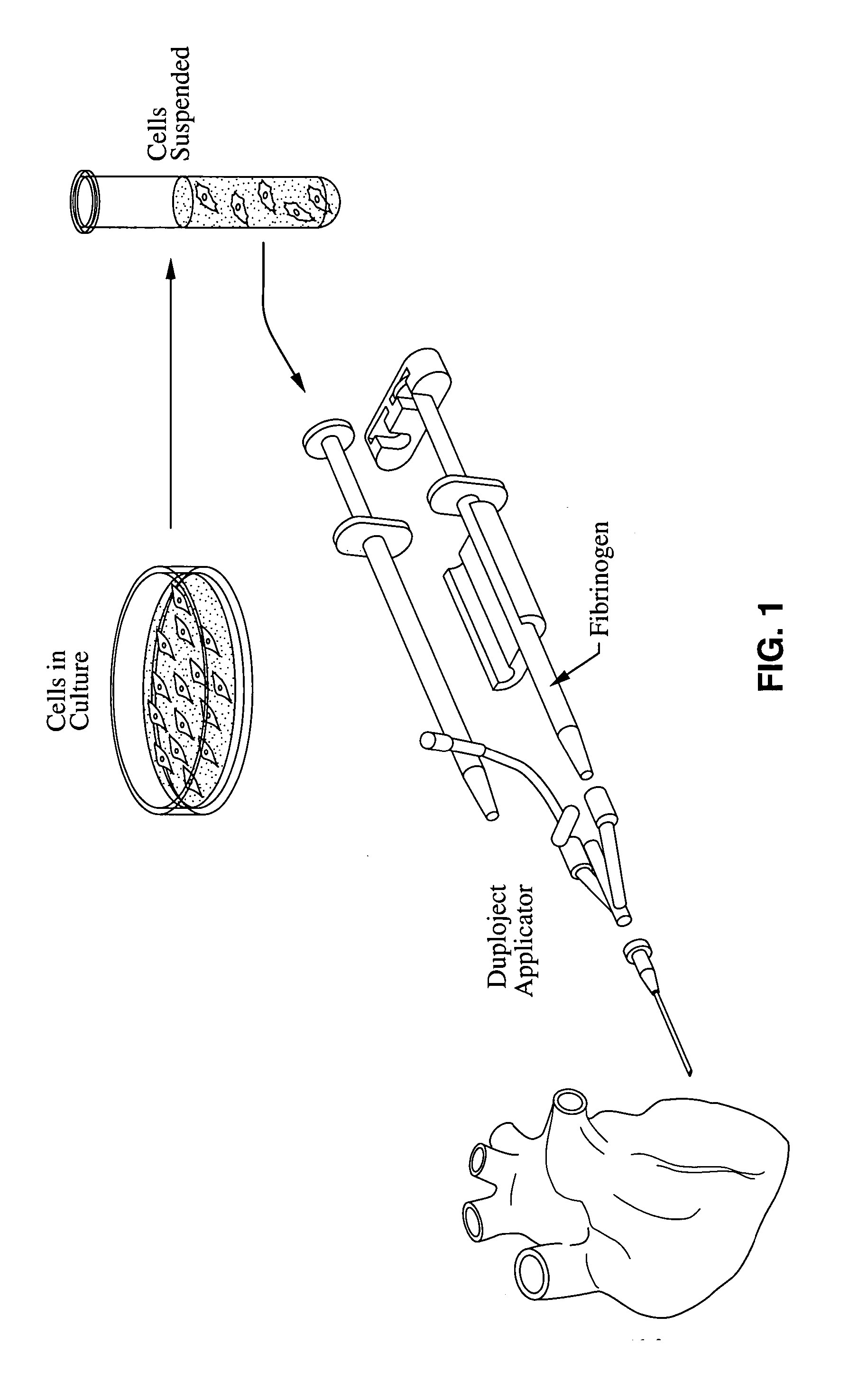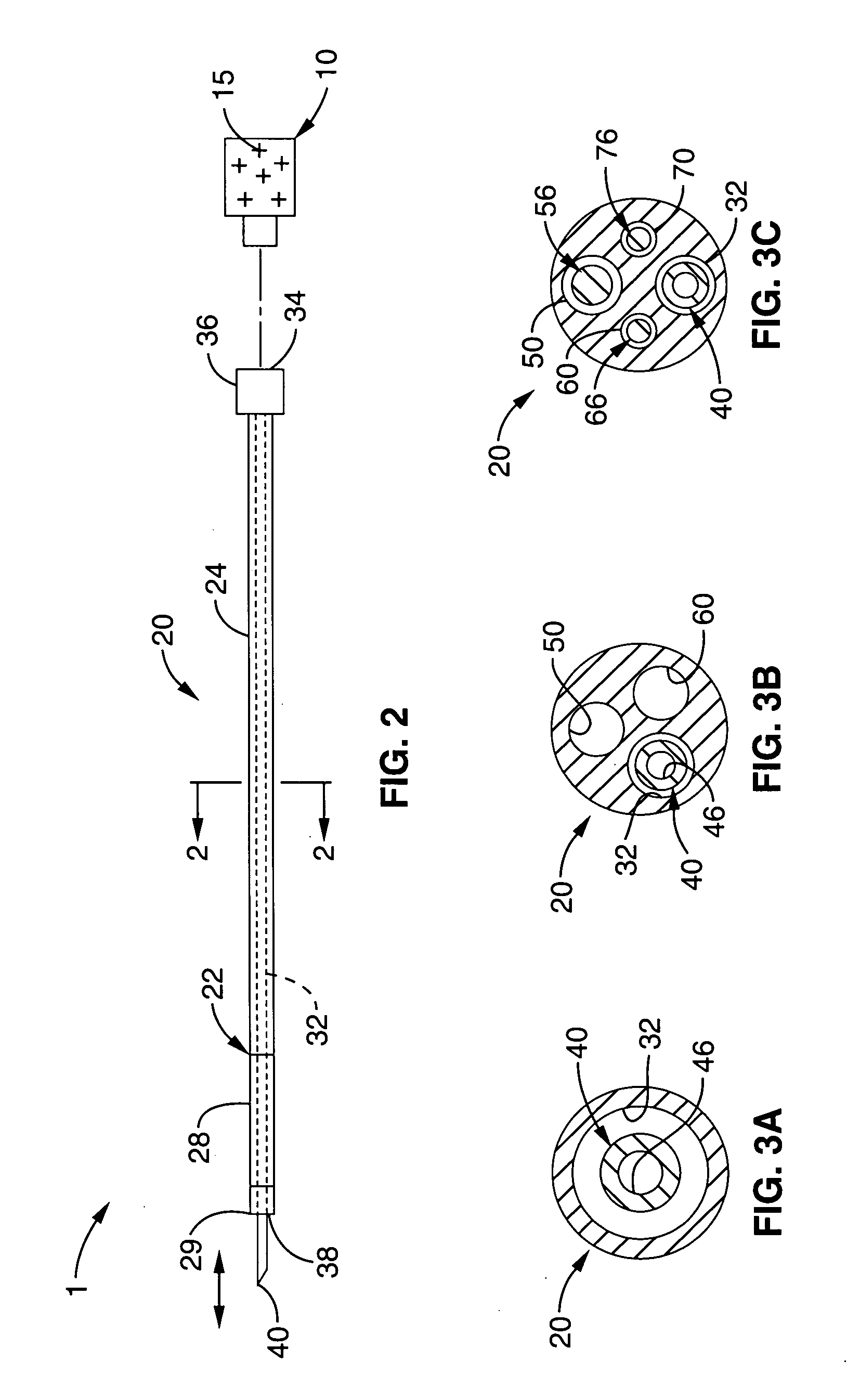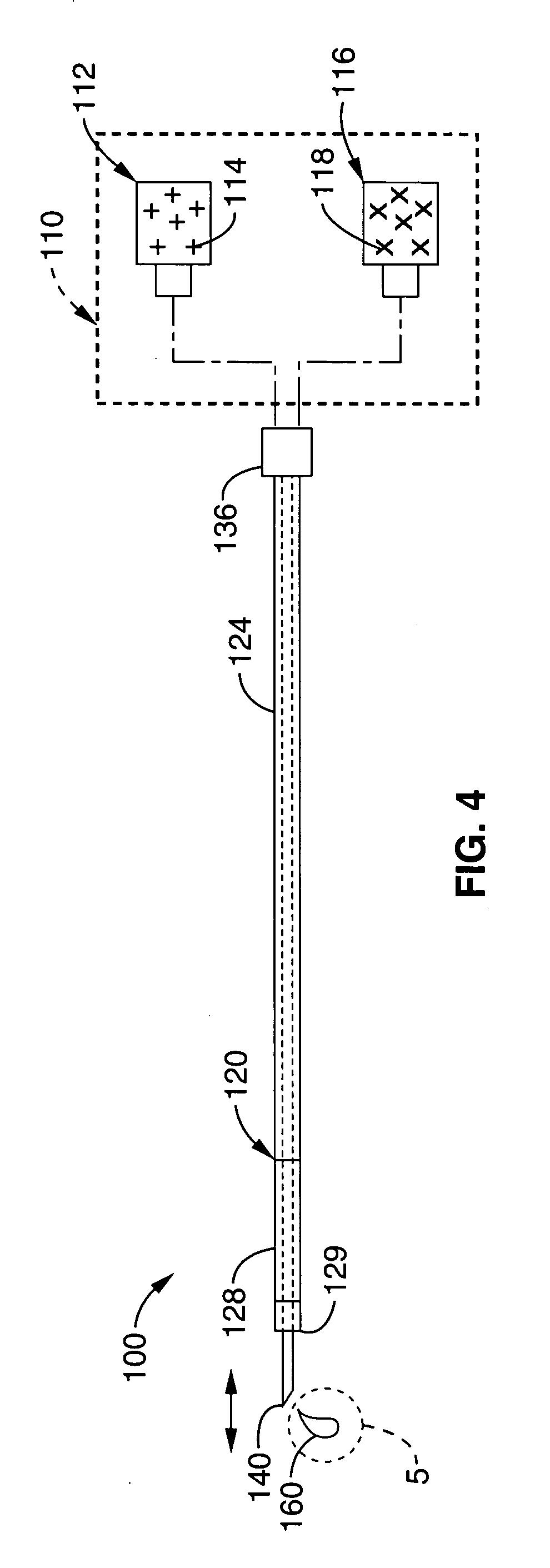Material compositions and related systems and methods for treating cardiac conditions
a technology of material compositions and delivery systems, applied in the direction of cardiovascular disorders, drug compositions, prostheses, etc., can solve the problems of increasing wall stress in the remaining viable myocardium, and achieve the effect of enhancing the retention of injected living cells
- Summary
- Abstract
- Description
- Claims
- Application Information
AI Technical Summary
Benefits of technology
Problems solved by technology
Method used
Image
Examples
example 1
[0219] This example describes an exemplary study that was performed to examine the effects of fibrin glue, an injectable biopolymer, as an internal support and scaffold, and to confirm its improvement to cardiac function and effects on infarct wall thickness following myocardial infarction (“MI”).
[0220] 1. Methods
[0221] a. Rat Myocardial Infarction Model
[0222] An ischemia reperfusion model was used in this study and was similar in various respects to that previously disclosed in the following publication which is herein incorporated in its entirety by reference thereto: Sievers R E, Schmiedl U, Wolfe C L, et al., “A model of acute regional myocardial ischemia and reperfusion in the rat.”Magn Reson Med. 1989; 10:172-81.
[0223] Female Sprague-Dawley Rats (225-250 g) were anesthetized with ketamine (90 mg / kg) and xylazine (10 mg / kg). Under sterile technique, the rats were placed in supine position and the chest was cleaned and shaved. The chest was opened by performing a median ster...
example 2
[0259] Cellular transplantation techniques in the myocardium are limited by transplanted cell retention and survival within the ischemic or otherwise damaged tissue. This example describes an exemplary study that was performed to confirm fibrin glue's benefits as a biopolymer scaffold to improve cell transplant survival and reduce infarct size.
[0260] 1. Methods
[0261] a. Rat Myocardial Infarction Model
[0262] A similar model and technique was used as described for Example 1.
[0263] b. Skeletal Myoblast Isolation and Culture
[0264] A similar method was used as described for Example 1. Cultures were routinely examined for fibroblast contamination and only populations of greater than 95% myoblasts were acceptable for injection. All injections were from the same pool of cells. Prior to injecting the rats which were sacrificed 24 hours post-injection, the myoblasts were labeled with 4′,6-diamidino-2-phenylindole (DAPI) (3 μM; Molecular Probes).
[0265] c. Fibrin Glue
[0266] The fibrin gl...
example 3
[0293] In the study performed according to this Example 3, the use of an injectable fibrin scaffold to preserve cardiac function in a chronic MI model was demonstrated and various benefits were confirmed.
[0294] 1. Methods
[0295] Methods of creation of MI, isolation and culture of skeletal cells, use of fibrin and echocardiograpy are described in Example 2.
[0296] a. Injection Surgeries
[0297] Similar injection surgery protocol over various treatment and control groups was used as described above for Example 2 and further with respect to Example 1, provided that according to this Example 3 injections were made about five weeks after myocardial infarction (MI), following completion of the remodeling process.
[0298] b. Echocardiography
[0299] Transthoracic echocardiography was performed on all animals in conscious state five weeks after MI (baseline echocardiogram), followed by control or treatment injections 1-2 days later. Then a follow-up echocardiogram was performed 5 weeks after ...
PUM
| Property | Measurement | Unit |
|---|---|---|
| angle | aaaaa | aaaaa |
| temperatures | aaaaa | aaaaa |
| temperatures | aaaaa | aaaaa |
Abstract
Description
Claims
Application Information
 Login to View More
Login to View More - R&D
- Intellectual Property
- Life Sciences
- Materials
- Tech Scout
- Unparalleled Data Quality
- Higher Quality Content
- 60% Fewer Hallucinations
Browse by: Latest US Patents, China's latest patents, Technical Efficacy Thesaurus, Application Domain, Technology Topic, Popular Technical Reports.
© 2025 PatSnap. All rights reserved.Legal|Privacy policy|Modern Slavery Act Transparency Statement|Sitemap|About US| Contact US: help@patsnap.com



